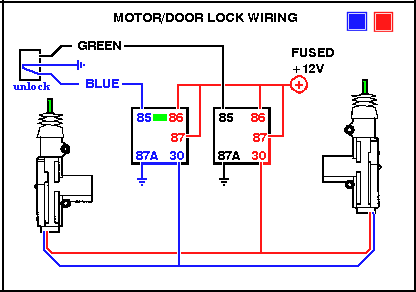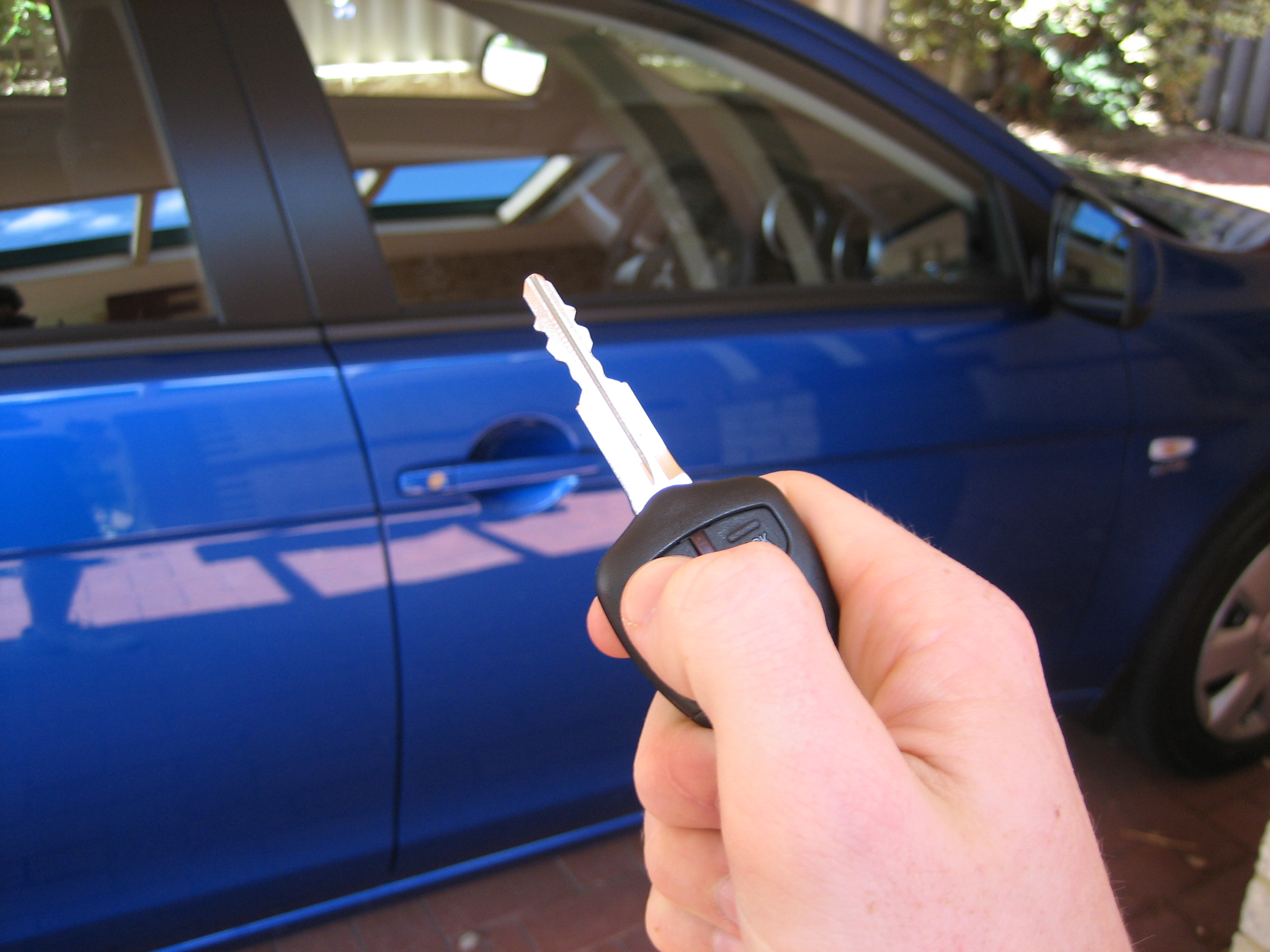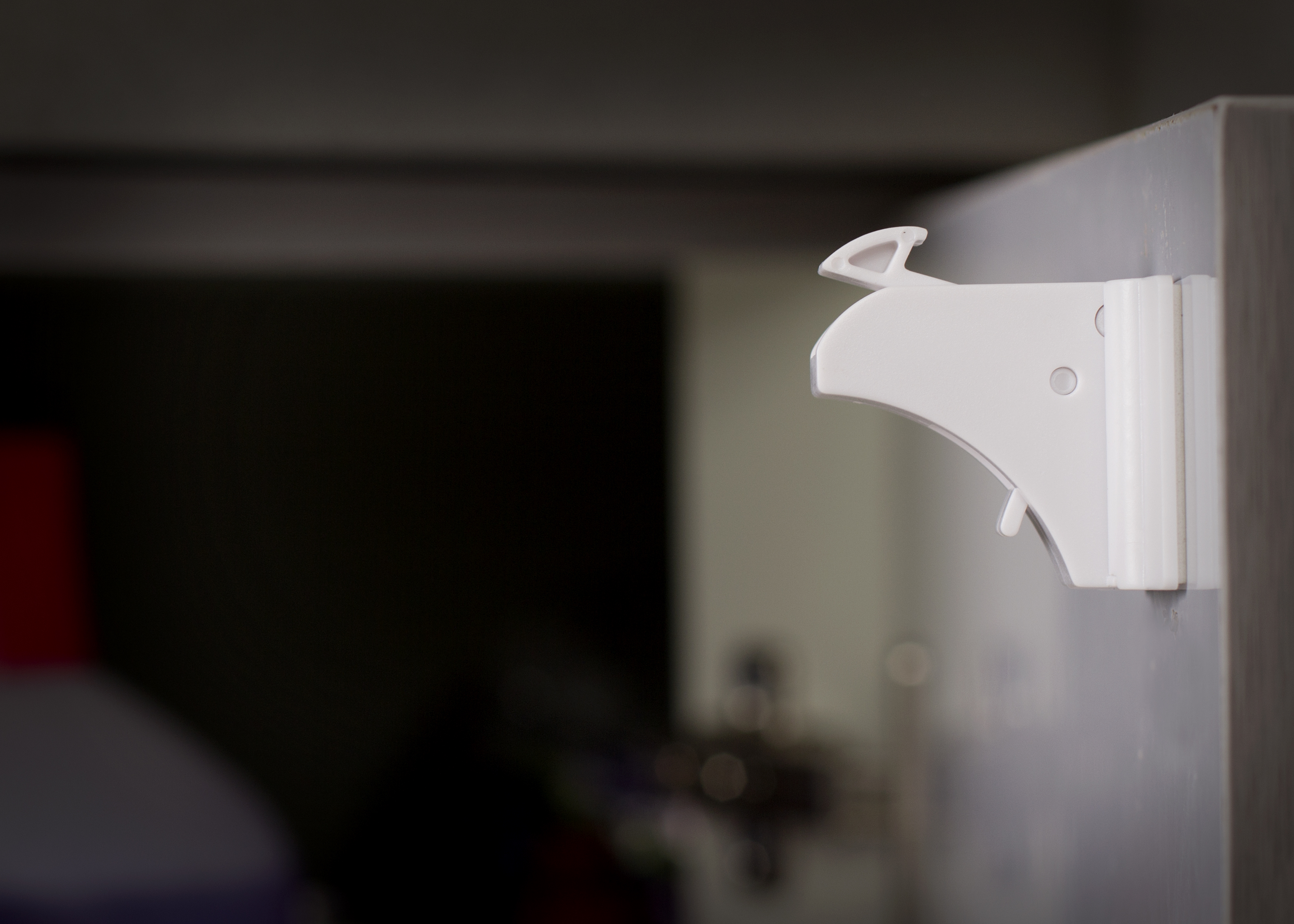|
Power Door Locks
Power door locks (also known as electric door locks or central locking) allow the driver or front passenger to simultaneously lock or unlock all the doors of an automobile or truck, by pressing a button or flipping a switch. Power door locks were introduced on the luxury Scripps-Booth in 1914, but were not common on luxury cars until Packard reintroduced them in 1956. Nearly every car model today offers this feature as at least optional equipment. Early systems locked and unlocked only the car doors. Many cars today also feature systems which can unlock such things as the luggage compartment or fuel filler cap door. It is also common on modern cars for the locks to activate automatically when the car is put into gear or reaches a certain speed. Remote and handsfree In 1980, Ford Motor Company introduced an external keypad-type keyless entry system, wherein the driver entered a numeric combination —either pre-programmed at the factory or one programmed by the owner— to ... [...More Info...] [...Related Items...] OR: [Wikipedia] [Google] [Baidu] |
Remote Keyless System
A remote keyless system (RKS), also known as keyless entry or remote central locking, is an electronic lock that controls access to a building or vehicle by using an electronic remote control (activated by a handheld device or automatically by proximity). Widely used in automobiles, an RKS performs the functions of a standard car key without physical contact. When within a few yards of the car, pressing a button on the remote can lock or unlock the doors, and may perform other functions. A remote keyless system can include both ''remote keyless entry'' (RKE), which unlocks the doors, and ''remote keyless ignition'' (RKI), which starts the engine. History One of the first introductions was in 1980 on the Ford Thunderbird, Mercury Cougar, Lincoln Continental Mark VI, and Lincoln Town Car, which Ford called ''Keyless Entry System'' (later renamed SecuriCode). It was a keypad on the driver-side exterior door above the door handle. It consisted of a keypad with five buttons ... [...More Info...] [...Related Items...] OR: [Wikipedia] [Google] [Baidu] |
Locks (security Device)
Lock(s) may refer to: Common meanings *Lock and key, a mechanical device used to secure items of importance *Lock (water navigation), a device for boats to transit between different levels of water, as in a canal Arts and entertainment * ''Lock'' (film), a 2016 Punjabi film * Lock (''Saga of the Skolian Empire''), a sentient machine in the novels by Catherine Asaro * Lock (waltz), a dance figure * ''Locked'' (miniseries), Indian web miniseries * ''The Lock'' (Constable), an 1824 painting by John Constable * ''The Lock'' (Fragonard) or ''The Bolt'', a 1777 painting by Jean-Honoré Fragonard * ''Locks'' (album), by Garnet Crow, 2008 People *Lock (surname) *Ormer Locklear (1891–1920), American stunt pilot and film actor nicknamed "Lock" * George Locks (1889–1965), English cricketer *Lock Martin (1916–1959), stage name of American actor Joseph Lockard Martin, Jr. Places *Lock, Ohio, an unincorporated community in the United States *Lock, South Australia, a small town in the c ... [...More Info...] [...Related Items...] OR: [Wikipedia] [Google] [Baidu] |
Automotive Accessories
The automotive aftermarket is the secondary market of the automotive industry, concerned with the manufacturing, remanufacturing, distribution, retailing, and installation of all vehicle parts, chemicals, equipment, and accessories, ''after'' the sale of the automobile by the original equipment manufacturer (OEM) to the consumer. The parts, accessories, etc. for sale may or may not be manufactured by the OEM. According to a report by the International Trade Administration in the US Department of Commerce, "''Aftermarket parts are divided into two categories: replacement parts and accessories. Replacement parts are automotive parts built or remanufactured to replace OE parts as they become worn or damaged. Accessories are parts made for comfort, convenience, performance, safety, or customization, and are designed for add-on after the original sale of the motor vehicle.''" The aftermarket encompasses parts for replacement, collision, appearance, and performance. The aftermarket provi ... [...More Info...] [...Related Items...] OR: [Wikipedia] [Google] [Baidu] |
Power Window
Power windows or electric windows are automobile windows which can be raised and lowered by pressing a button or switch, as opposed to using a crank handle. History Packard had introduced hydraulic window lifts (power windows) in fall of 1940, for its new 1941 Packard 180 series cars. This was a hydro-electric system. In 1941, the Ford Motor Company followed with the first power windows on the Lincoln Custom (only the limousine and seven-passenger sedans). Cadillac had a straight-electric divider window (but not side windows) on their series 75. Power assists originated in the need and desire to move convertible body-style tops up and down by some means other than human effort. The earliest power assists were vacuum-operated and were offered on Chrysler Corporation vehicles, particularly the low-cost Plymouth convertibles in the late 1930s. Shortly before World War II, General Motors developed a central hydraulic pump for working convertible tops. This system was introd ... [...More Info...] [...Related Items...] OR: [Wikipedia] [Google] [Baidu] |
Child Safety Lock
A child safety lock is a special-purpose lock for cabinets, drawers, bottles, etc. that is designed to help prevent children from getting at any dangerous things or contents. Young children are naturally curious about their surroundings and will always explore, but as they may be unaware of dangerous substances or situations, the results can be fatal. Numerous cases of poisoning have resulted from eating brightly colored pills or spilling cleaning solvents. Containers In the United States, child safety locking mechanisms have been required by law since 1970 on all containers for potentially dangerous medicines and household cleaning products. These laws are enforced by the Consumer Products Safety Commission. These locking mechanisms may take several forms, but the most common is a design that requires a tab to be pressed firmly as the lid is twisted. Great strength and dexterity are not required to open the bottle, but the process is deliberately made to be unintuitive, and the c ... [...More Info...] [...Related Items...] OR: [Wikipedia] [Google] [Baidu] |
Automobile Accessory Power
] Automobile accessory power can be transferred by several different means. However, it is always ultimately derived from the automobile's internal combustion engine, battery, or other "prime mover" source of energy. The advent of high-powered batteries in hybrid and all-electrical vehicles is shifting the balance of technologies even further in the direction of electrically powered accessories. An engine has one or more devices for converting energy it produces into a usable form, electricity connection through the alternator, hydraulic connections from a pump or engine system, compressed air, and engine vacuum; or the engine may be directly tapped through a mechanical connection. Modern vehicles run most accessories on electrical power. Typically, only 2% of a vehicle's total power output has gone towards powering accessories. Electrical and hybrid vehicles may use a larger proportion of energy for accessories, due to reduced inefficiencies in the drive train, especially the el ... [...More Info...] [...Related Items...] OR: [Wikipedia] [Google] [Baidu] |
Distance
Distance is a numerical or occasionally qualitative measurement of how far apart objects or points are. In physics or everyday usage, distance may refer to a physical length or an estimation based on other criteria (e.g. "two counties over"). Since spatial cognition is a rich source of conceptual metaphors in human thought, the term is also frequently used metaphorically to mean a measurement of the amount of difference between two similar objects (such as statistical distance between probability distributions or edit distance between strings of text) or a degree of separation (as exemplified by distance between people in a social network). Most such notions of distance, both physical and metaphorical, are formalized in mathematics using the notion of a metric space. In the social sciences, distance can refer to a qualitative measurement of separation, such as social distance or psychological distance. Distances in physics and geometry The distance between physical loca ... [...More Info...] [...Related Items...] OR: [Wikipedia] [Google] [Baidu] |
Advanced Key
A smart key is an electronic access and authorization system that is available either as standard equipment, or as an option in several car designs. It was first developed by Siemens in 1995 and introduced by Mercedes-Benz under the name "Keyless-Go" in 1998 on the W220 S-Class, after the design patent was filed by Daimler-Benz on May 17, 1997. How it works The smart key allows the driver to keep the key fob pocketed when unlocking, locking and starting the vehicle. The key is identified via one of several antennas in the car's bodywork and a radio pulse generator in the key housing. Depending on the system, the vehicle is automatically unlocked when a button or sensor on the door handle or trunk release is pressed. Vehicles with a smart-key system have a mechanical backup, usually in the form of a spare key blade supplied with the vehicle. Some manufacturers hide the backup lock behind a cover for styling. Vehicles with a smart-key system can disengage the immobilizer and activ ... [...More Info...] [...Related Items...] OR: [Wikipedia] [Google] [Baidu] |
Transducer
A transducer is a device that converts energy from one form to another. Usually a transducer converts a signal in one form of energy to a signal in another. Transducers are often employed at the boundaries of automation, measurement, and control systems, where electrical signals are converted to and from other physical quantities (energy, force, torque, light, motion, position, etc.). The process of converting one form of energy to another is known as transduction. Types * Mechanical transducers, so-called as they convert physical quantities into mechanical outputs or vice versa; * Electrical transducers however convert physical quantities into electrical outputs or signals. Examples of these are: ** a thermocouple that changes temperature differences into a small voltage; ** a linear variable differential transformer (LVDT), used to measure displacement (position) changes by means of electrical signals. Sensors, actuators and transceivers Transducers can be categorized by wh ... [...More Info...] [...Related Items...] OR: [Wikipedia] [Google] [Baidu] |
Renault Fuego
The Renault Fuego (''Fire'' in Spanish) is a sport hatchback that was manufactured and marketed by Renault from 1980 to 1986, replacing the Renault 15 and 17 coupés of the 1970s. Marketed in the United States by American Motors Corporation (AMC), the Fuego was also assembled in several countries in South America, where production continued until 1992. According to Renault, 265,367 Fuegos were produced, 85% of those manufactured in France from February 1980 to October 1985. Spanish production for European markets continued into 1986. Design The Fuego's exterior was styled by Michel Jardin, and the interior by Francois Lampreia, both working under direction of Robert Opron. Noted automotive journalist, L. J. K. Setright said the Fuego "is blessed with a body which is not only roomy and aerodynamically efficient, but is also beautiful". The Fuego was heavily based on the Renault 18, sharing its floorpan and drivetrain, with its front suspension developed from the larger Rena ... [...More Info...] [...Related Items...] OR: [Wikipedia] [Google] [Baidu] |





